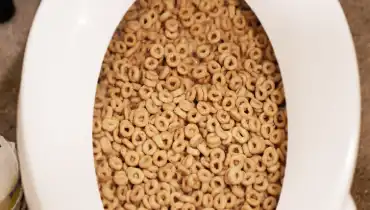Is it Common to Flush Food in the Toilet?
Is it Common to Flush Food in the Toilet?
Blog Article
Just about everyone will have their own individual opinion when it comes to Think Twice Before Flushing Food Down Your Toilet.

Intro
Lots of people are commonly confronted with the problem of what to do with food waste, particularly when it comes to leftovers or scraps. One usual inquiry that occurs is whether it's okay to purge food down the bathroom. In this post, we'll explore the reasons why individuals might take into consideration flushing food, the effects of doing so, and alternate approaches for proper disposal.
Reasons why individuals might take into consideration flushing food
Lack of recognition
Some individuals may not be aware of the prospective injury caused by flushing food down the bathroom. They might mistakenly think that it's a safe practice.
Benefit
Flushing food down the bathroom might feel like a fast and easy service to throwing away undesirable scraps, especially when there's no nearby trash bin available.
Laziness
In some cases, individuals might merely select to flush food out of sheer laziness, without considering the consequences of their activities.
Effects of flushing food down the bathroom
Environmental influence
Food waste that winds up in waterways can add to air pollution and damage marine ecological communities. Furthermore, the water utilized to flush food can stress water resources.
Pipes issues
Purging food can result in clogged up pipes and drains pipes, causing expensive pipes repair work and hassles.
Sorts of food that should not be flushed
Coarse foods
Foods with fibrous structures such as celery or corn husks can obtain entangled in pipelines and cause blockages.
Starchy foods
Starchy foods like pasta and rice can soak up water and swell, resulting in obstructions in pipelines.
Oils and fats
Greasy foods like bacon or food preparation oils should never be flushed down the toilet as they can solidify and cause obstructions.
Appropriate disposal techniques for food waste
Utilizing a garbage disposal
For homes outfitted with waste disposal unit, food scraps can be ground up and purged via the plumbing system. Nevertheless, not all foods are suitable for disposal in this manner.
Recycling
Particular food product packaging materials can be recycled, lowering waste and minimizing ecological impact.
Composting
Composting is an environmentally friendly way to dispose of food waste. Organic materials can be composted and made use of to enhance dirt for gardening.
The importance of proper waste management
Lowering environmental harm
Correct waste management techniques, such as composting and recycling, help decrease pollution and protect natural resources for future generations.
Shielding plumbing systems
By preventing the method of flushing food down the commode, property owners can stop expensive pipes repair services and preserve the stability of their plumbing systems.
Verdict
In conclusion, while it may be alluring to purge food down the bathroom for ease, it is necessary to comprehend the potential effects of this action. By taking on correct waste monitoring practices and throwing away food waste responsibly, individuals can contribute to much healthier pipes systems and a cleaner setting for all.
THINK TWICE BEFORE FLUSHING FOOD DOWN YOUR TOILET IN FALLBROOK CA
Let’s be honest, we’re really supposed to be tossing rotten or leftover food in the compost bin or trash can. But many people like to place scraps of food down the drain of, say, their kitchen sink. That’s why the garbage disposal was invented: so we can continue to place certain foods down the drain without clogging our drain in the process. Smart.
But not all of us have the luxury of having a garbage disposal installed. So, you might continue to shove food down your sink drain anyway – or worse: you might flush them down your toilet! If you’re guilty of doing the latter, you’re going to want to stop, and here’s why:
Toilet Drains Aren’t Designed to Handle Food!
There’s your answer: food just doesn’t belong in your toilet. It may seem like your toilet drain is wider than the drains of your sinks, but truth be told, that isn’t actually the case. The narrower pipes of your toilet leave your plumbing at risk for clogging if you do happen to flush your food. In addition, food doesn’t break down as quickly that toilet paper and human waste do. In turn, this leaves your toilet at risk for a nasty clog.
Although a flush of a tiny pinch of food every now and then isn’t going to completely damage your toilet, there are certain foods that should absolutely not be flushed in your toilet at all. These include starchy foods like mashed potatoes, grains, hard pieces of food that are slow to break down, and fats and oils.
The latter categories of food are particularly problematic as they may harden, expand as they absorb water, break down slowly in your system, or generally create the perfect obstruction with their gelatinous composition. These are all things you don’t want in your plumbing system!
Experiencing a Toilet Clog?
Nobody’s perfect, and we all make mistakes. Sometimes one of the mistakes people make is flushing food down their toilet and later realizing that it wasn’t the best thing to do once they see that their toilet is now clogged. Uh-oh!

Hopefully you liked our excerpt about Flushing Food Down the Toilet?. Thank you for spending some time to read through our post. Are you aware of another individual who is fascinated by the niche? Do not hesitate to promote it. Bless you for being here. Revisit us soon.
Click Here Report this page